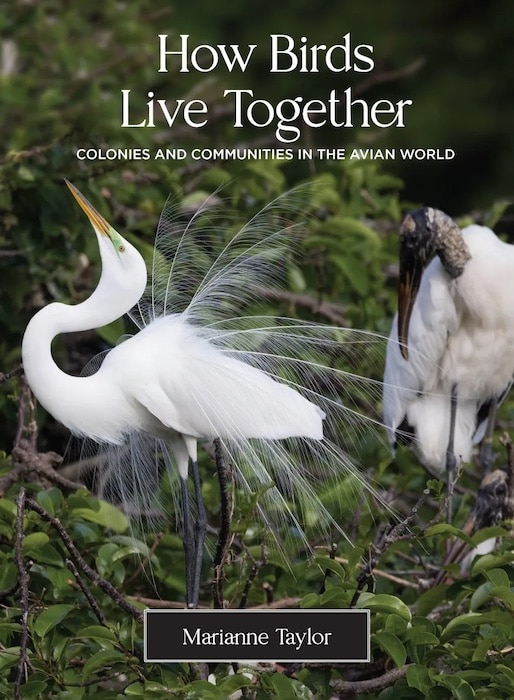| Marianne Taylor | Princeton University Press | 2022 | Hardback | 224 Pages, colour photos, colour illustrations, colour maps | ISBN: 9780691231907 | £25.00p |

The Publisher’s View:
Featuring dramatic and delightful wild bird colonies and communities, How Birds Live Together offers a broad overview of social living in the avian world. From long-established seabird colonies that use the same cliffs for generations to the fast-shifting dynamics of flock formation, leading wildlife writer Marianne Taylor explores the different ways birds choose to dwell together.
Through fascinating text, colour photos, maps, and other graphics, Taylor examines the advantages of avian sociality and social breeding. Chapters provide detailed information on diverse types of bird colonies, including those species that construct single-family nests close together in trees, those that share large, communal nests housing multiple families, those that nest in tunnels dug into the earth, those that form exposed colonies on open ground and defend them collectively, relying on ferocious aggression, those that live communally on human-made structures in towns and cities, and more. Taylor discusses the challenges, benefits, hazards, and social dynamics of each style of living, and features a wealth of species as examples.
Showcasing colonies from the edge of Scotland and the tropical delta of the Everglades to the Namib Desert in Africa, How Birds Live Together gives bird enthusiasts a vivid understanding of avian social communities.
The Author: Marianne Taylor is a freelance writer, editor, illustrator, and photographer. She has written more than thirty books on natural history, including The Gull Next Door and The Story of Life in 10 1/2 Species.
Fatbirder View:
Whether it’s a noisy seabird colony full of bad neighbours or the sweeping aerial ballet of starlings going to roost, birds together are more entertaining than a solitary bird.
Some of us know about the phenomena of communal nest sites or unified action. The why and how is less obvious. It’s not simply, safety in numbers, because in some places prey and predator live cheek by jowl.
Dive into this entertaining and informative book and you will leave with more knowledge than you entered it.
There are many examples and some are nuanced from the main, but there are very many and they offer spectacular viewing at times, whether it is a million flamingos in a soda lake in the Rift Valley, or Carmine Bee-eaters peppering the banks of the Okavango River with their nest holes, the sites are beautiful, fascinating and the subject of some very fine photography in the book. I’ve been privileged to see both of these and am happy to admit the latter brought tears to my eyes.
This volume comes highly recommended by yours truly!
Fatbirder
